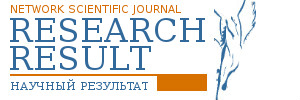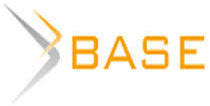Criteria and indicators for assessing the motor development of children with autism spectrum disorders
Introduction. The relevance of the tasks of physical education of preschoolers with autism spectrum disorders (ASD), aimed at studying, analyzing and assessing the level of motor development, is due to the high risks of motor disorders in children of this nosological group, the presence of motor development problems and a decrease in physical condition indicators. The problem of significant individual differences in the motor development of children with ASD causes the need for an objective assessment of its level and ways to overcome existing deficits. This indicates the demand for new scientific approaches to the definition of criteria and indicators for assessing motor development and causes the need for pedagogical support of individual and group strategies of physical education. Purpose of the work. Determination of criteria, indicators and assessment of the level of motor development of preschoolers with ASD. Materials and methods. The results of a study of the motor development of 27 older preschool children with ASD were analyzed and evaluated. Theoretical (analysis, synthesis, generalization); empirical (observation of the performance of motor tasks: long jump from a place, throwing a ball, standing on one leg, throwing and catching a ball, endurance running); methods of mathematical statistics (φ-Fisher criterion) were used. Results and their discussion. The following criteria of motor development of children with ASD are proposed: technique of execution, level of independence, level of understanding of speech instructions. Observation and assessment of the level of motor development of preschoolers with ASD showed limited opportunities in the technique of performing physical exercises, the presence of problems in children with ASD related to the development of the balance function (51.85%), difficulties in becoming purposeful in performing movements (44.44%). 55.85% of children have movement coordination disorders. Conclusion. The results of the study indicate the relevance of the search for new methods and tools that take into account the individual level of motor development of each child with ASD, namely visual structuring of activities and the use of symbols for the development of independence in motor activity.

















While nobody left any comments to this publication.
You can be first.
The article was supported by the Russian Foundation for Basic Research grant № 20-013-00434 “Modeling the process of integral socialization-individualization of preschool children with disabilities in physical culture and health-improving activities”.